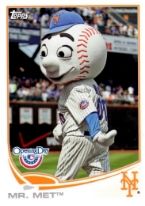Ever hear of a grown adult, someone in their 30’s, that started to collect cards…… when they were never exposed to them as a kid? There are probably some out there. But probably not many. We all have heard the story “I just got back into collecting after a __________ year break.” I always greet those emails with a “Welcome Back!” Many collectors take breaks in collecting or even take years off in between buying cards. That’s probably a healthy thing. Or perhaps it’s just a thing called life that gets in the way of chasing down rookie cards.

Back in the day, there were fewer card sets produced each year. As the 1990’s rolled on the number of sets card companies were cranking out seemed to exponentially grow each year. It was big business. The billion dollar bubble busted in the mid-1990s but some people got hooked, while for many it just planted a seed. That seed, in my eyes, is vital to the industry as a whole. When someone gets back into collecting, that’s a good thing. By and large people get back into collecting after being exposed as a youth. I don’t think it’s a stretch to say that.
Card companies have little reason to cater to the younger audience. Try competing with IPads, video game companies, the internet, homework, and no allowance and see how far you get. Mothers around the U.S. didn’t like cards taking up space in their house in the 1950s. What makes you think that has changed today? Card companies dip their toe in the kid market. Panini Triple Play Baseball comes to mind. Perhaps Topps Opening Day, but I know a lot of older guys that like those sets too.
The products that are supposed to appeal to kids don’t hit the mark. Kids are smart. They have the same access to information the old folks do. They can see the junk they get in Opening Day doesn’t quite match up to those autographs in Topps Chrome. Kids want the good stuff too. Kids will get bored with Boo Boo the Mascot cards. Trust me. Kids have a bunch of stuff that glows in the dark and have enough stickers to cover a wall. When I was a kid I was buying the same sets as the older guys. 1989-90 Hoops Basketball. 1990 Topps Baseball. I could pull a David Robinson RC, just like the old guys could. Do you have to put a Babe Ruth cut signature in a kids hand to get them hooked? Heck no. But sets like Triple Play and Opening Day might hold the attention span of a kid for 5 seconds.
Panini released a series of cards dubbed Adrenalyn several years ago. Packs were $0.99 cents each at places like Dollar Tree, Target and WalMart. The Adrenalyn set might be a sore subject for the company. They spent considerable money getting a group in Canada to set up a website that allowed kids to type in a code on the back of the card. It unlocked a digital version of the card that could then be played in an online game against fellow collectors. You had to get the good, somewhat rare cards, to become an ace at the game. There were quite a few kids who ate it up. They loved it. I gave away thousands of codes. They were easy to give away because the kids really just wanted the code for the online card. The actual card in their hand was just taking up space. Hundreds of young collectors everyday were refreshing my “Free Adrenalyn Code” pages in hopes of getting lucky.
I lost money giving away the codes. Try converting “young” traffic on the web and you’ll probably go broke. Panini lost money too, they no longer make the set. The concept of the cards really grabbed me though. I could see myself as a 10 year old kid wanting to play the online game. Thousands of kids played Adrenalyn online and undoubtedly a seed was planted. I still correspond with some of these, now young men, who are onto collecting other sets and even a few who have gotten into selling.
This is probably where my argument for getting kids into the hobby gets weak. Asking a card company to take a loss on a product line just to get kids into the hobby is a straight uphill climb. If I were speaking to Topps, I’d say your company is built on the backs of 5 cent packs with bubble gum in them. Kids not only ate up the gum, they dug the cards too. The company wants to be around in another 50 years right? In 50 years all the 1990s collectors will be gone or on their death bed.
Playing to the long term health of a company is still a weak argument to get card manufacturers to invest in kids. Card companies are thinking about their next set, or trying (paying) to get an athlete to tweet them. Most employees at at these places aren’t thinking about what cards will be like 50 years from now. They are thinking about the four products coming out in the next five weeks. If I worked at one of these joints I’d have that same mindset. Set to set. Check to check. Card companies are battling for dollars of grown men. Anyone else who doesn’t fit that demographic is of secondary concern.
Asking a card manufacturer to lose a dollar today only to gain it back in 10 years is not happening in the market today. The entire employment structure at each company will change in that time period. Topps ownership will probably change in the next ten years. A handful of other small card manufactures will go broke in that span as well. Talk about kids to people in this industry and some might scoff and laugh. We are in the midst of some of the 1990s collectors hitting their 30s and 40s. Companies like Topps and Panini know this. There is no reason to go after the kids of today because they can still milk the 1990s gravy train to an extent. I never hear any card company big shot talk about cards 5 to 10 years from now. That’s not a long time away. Truth is, in a business like sports cards, these companies probably can’t afford to think past the next set on the production line.


